Paris, the French capital and the sixth largest city in Europe by population, is home to 2.2 million. Population of agglomeration is more than 10 million. In this case, 15% of city residents are foreigners.
Every year the city is visited almost by 30 million. Tourists annually replenish the budget of France nearly 400 million euro.
Facts About Paris
Country France
Currency Euro (EUR)
Language French
Population 2,273,305 (2013) | Metro: 12,161,542 (2009)
Timezone UTC+1
Louvre Museum
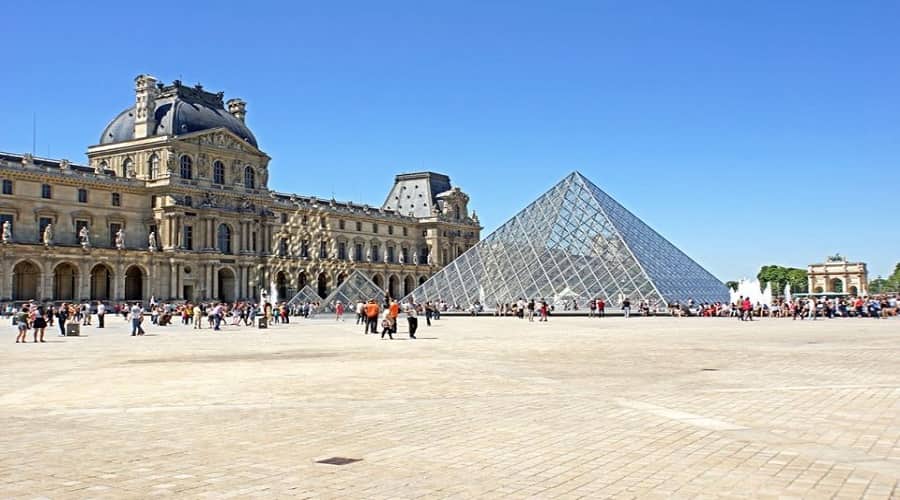
This is one of the most well-known and oldest museums in the world. It has a rich history of collecting relics of France and other world`s artistic works, which were composed from the times of the Capetian dynasty.
This medieval fortress, subsequently transformed into a luxurious palace was built in the end of XII century by Philip Augustus. Later, the Louvre has repeatedly changed its appearance.
When the royal court in 1682 moved to Versailles, the Louvre was left without proper attention and, therefore, fell into disrepair. Subsequently, there were even talks about its demolition. However, the situation dramatically changed with the advent of Napoleon I.
There is an enormous collection covering a huge time and geographical space. It can be observed in the Louvre today. The Musée du quai Branly exhibits art of America, Africa and Oceania. And the newest European art (from 1848) is presented by the works of the Centre Georges Pompidou and the Museum d’Orsay. There are also earlier Iran, Western Europe, Greece, the Middle East and Egypt antiquities.
Notre-Dame de Paris
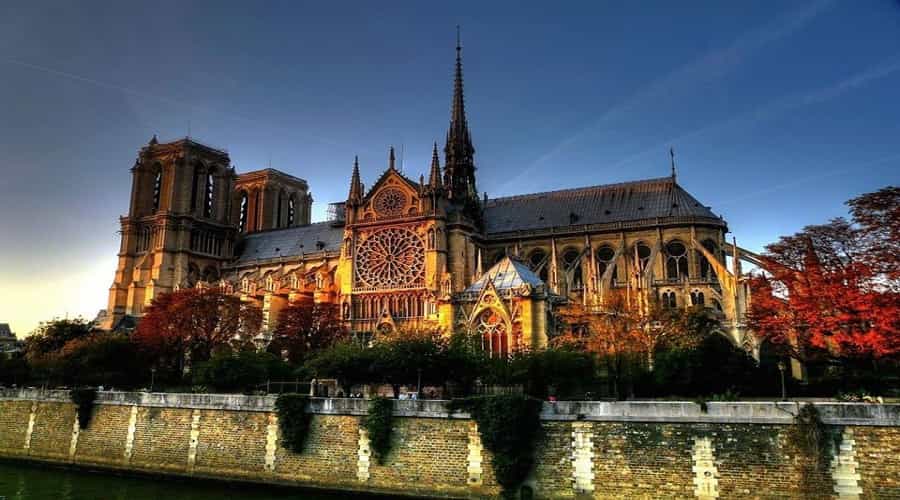
Notre Dame is the main Roman Catholic Cathedral, located on the Ile de la Cité, in the central part of the capital of France. This cathedral was erected on the location of the first French Christian church of the Basilica of St. Stefan, which, in turn, was erected in place of a pagan temple of Jupiter. It took almost two centuries to construct Notre Dame de Paris. It was built during 1163-1345.
Such a long building probably influenced the fact that the architecture of the temple consisted not only of the characteristic elements of early, but also components that are typical for late Gothic architecture. At the time of its completion the Notre Dame Cathedral was the largest Gothic church throughout Western Europe.
Over the doors of the main facade of the temple there are sculpted panels depicting scenes from the Gospel. The doors are decorated with wrought-reliefs. The roof is made of special technology of lead tiles, 5 mm thick, laid lap.
The cathedral is mentioned in many literary works, and once a year attracts the attention of thousands of tourists.
Eiffel Tower
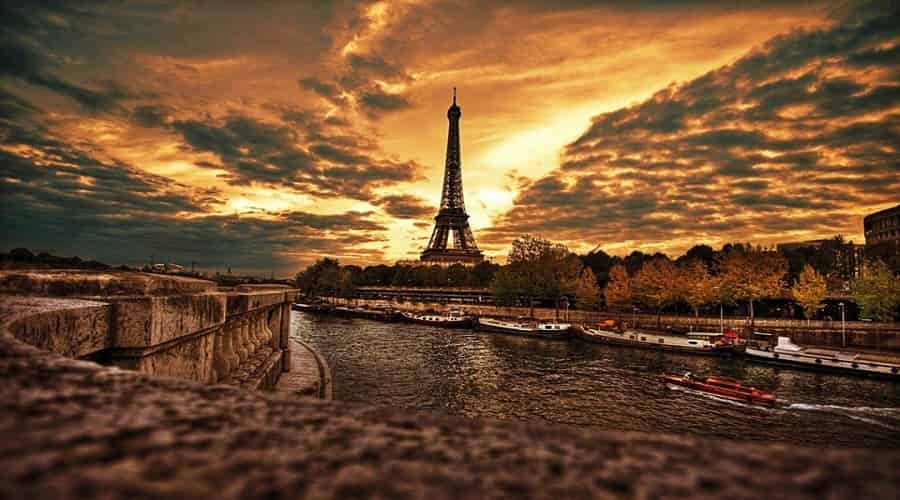
Everyone wants to go to Paris one day. This romantic and interesting city is very attractive to tourists. The capital of France is a city for those, who are in love and are looking for romantic and memorable adventures. The Eiffel Tower has been an invaluable “jewel” of Paris for a hundred years. If you want to visit it, read some facts on it so your trip will be even more interesting!
The tower was named to honor its designer Gustave Eiffel, who himself referred it as the much easier – the 300-metre high tower (tourde 300 mètres).
It was built by Gustave Eiffel’s company in 1889 to commemorate the 100-year anniversary of the French Revolution.
Le Marais
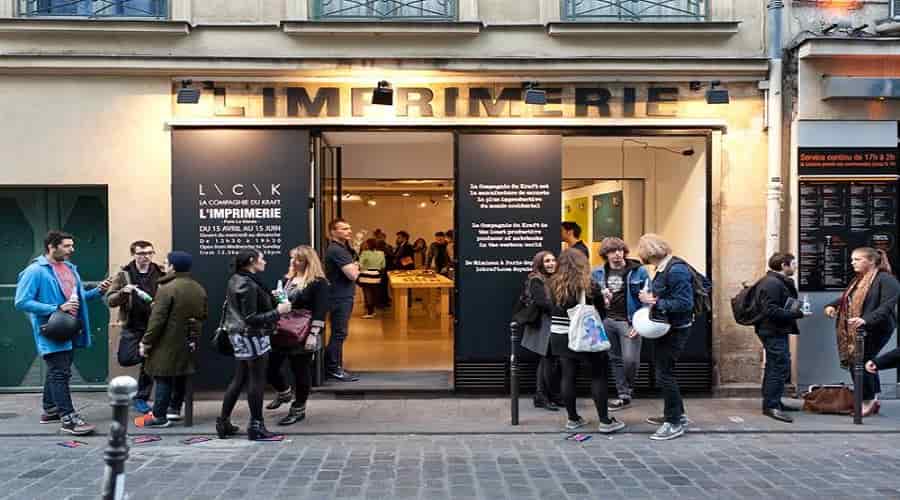
Le Marais is one of the neighborhoods of Paris, between the Place de la Bastille and Palace République. There was just a swamp here in the early times. It was dried in the XIII century, at the request of members of the Knights Templar. In those days it was the outskirts of Paris. Today La Marais is a city center.
This district managed to keep its appearance almost intact to the present days. It stood even in times of so-called Baron Haussmann’s renovation of Paris of the nineteenth century. Because of this today we have the opportunity to admire the luxurious mansions and palaces, located next to the old artisan houses.
On the west side of the district, you can see the world-famous Center for contemporary art, named after French President Pompidou. It was designed by Richard Rogers and Renzo Piano in the seventies of the last century.
Less than half a kilometer from the Pompidou Centre there is the Museum of Jewish Art and History. It was opened in 1998. It neighbors with the Museum of French History which is located in a monumental mansion quarter.
Sacre-Coeur
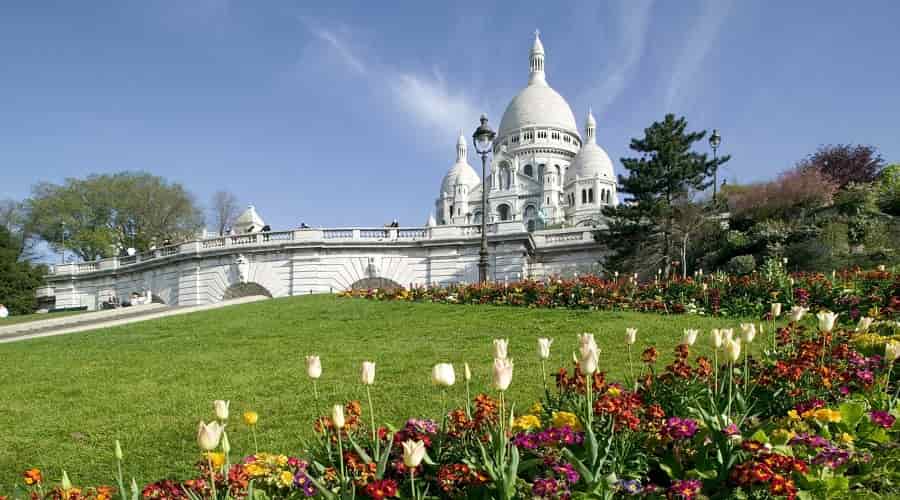
Construction of the Sacré-Coeur (a Catholic Cathedral, located on the hill of Montmartre) commenced in the final years of the nineteenth century. After a devastating Franco-Prussian War, which brought a host of misfortunes, a temple was decided to be built, so that France always remembered about the troubles that the war brought in every family.
For the right to be engaged in the construction of Sacred Heart Basilica 78 architects competed. As a result, Paul Abad, a student of Viollet-le-Duc won the competition. Abad decided to build a temple of white stone extracted from quarries of Chateau Landon. This stone is famous for the fact that over the years it hardens so that in no way inferiors to the strength of granite. During the construction the foundation was thoroughly strengthened. That is why the work was delayed, and therefore the Sacré-Coeur was opened for parishioners only in 1914.
The biggest bell in Paris, called the Savoyard, is placed in the Cathedral of the Sacred Heart. Its weight exceeds 19 tons. Inside the Basilica you can see the decoration of the monumental mosaic image on the theme “The worship of France before the Heart of the Lord”, along with innumerable stained glass windows, the author of which was the artist Merson.
Palace of Versailles
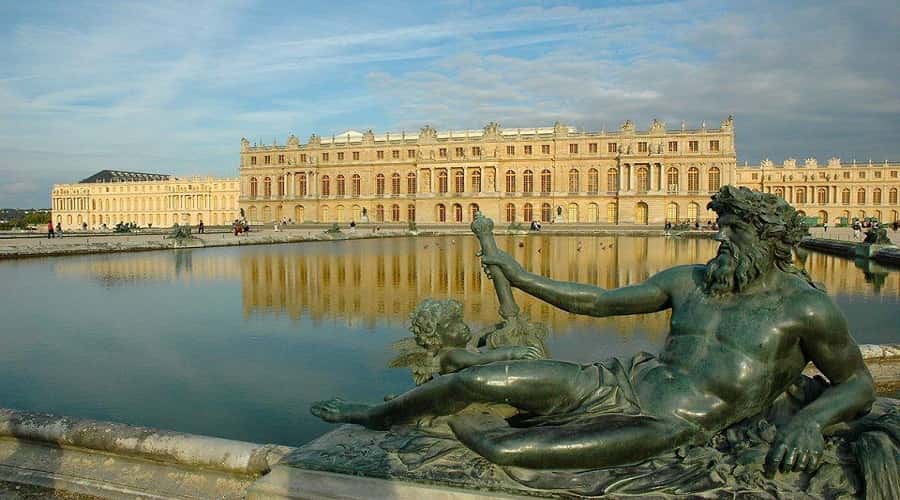
The construction of Versailles began in 1661. It was carried out under the guidance of the Sun King Louis XIV. It took him more than fifty years to realize all that he had in mind. As a result, the Hall of Mirrors decorated the palace from the garden. It produces a tremendous impression with its mirrors, paintings and columns. The King also ordered to build the Palace Chapel, the Gallery of battles and the Royal Opera.
Later, the successors of the Sun King – Louis XV and Louis XVI – subsequently made their additions. Thus, the Petit Trianon and unprecedented beautiful park appeared.
A huge number of significant events of the world and, in particular, French history are associated with Versailles. In the eighteenth century the residence of the King witnessed the signing of many political agreements. Among them there is an agreement ending the American Revolutionary War, signed in 1783, and the Declaration of the Rights of Man and the Citizen approved by the Constituent Assembly in 1789.
Musee d’Orsay
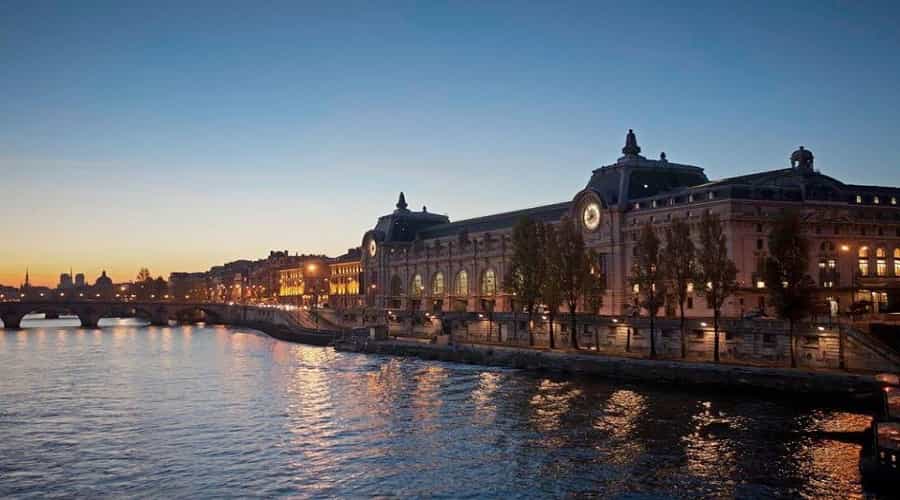
If you are fond of painting, especially the works by the Impressionists, then you must visit one of the most famous places in Paris – the Museum of Applied and Fine Arts d’Orsay, containing in its exposition one of the voluminous collection of works by sculptors and painters of Europe, who worked in the period from 1850 to 1910.
Remarkably, in the old days a train station was located at the place of the present Museum d’Orsay. Since 1900, the station had served for trains running from Paris to Orleans. In 1939 it was closed, after which the building was supposed to be demolished. Fortunately, this did not happen, and with the introduction of Pompidou for the presidency, the idea to organize a museum in the former premises of the rail station appeared. By 1986, all works on the creation of the museum had been completed, and it was opened to visitors.
Today, the museum exhibition is available at five levels. All kinds of art (sculpture, painting, architecture, photography, cinema, music) are presented in chronological order. It is noteworthy that the Musée d’Orsay building sometimes serves as a place for concerts and performances. Annual festival dedicated to the emergence of cinema is held here.
Pere Lachaise Cemetery
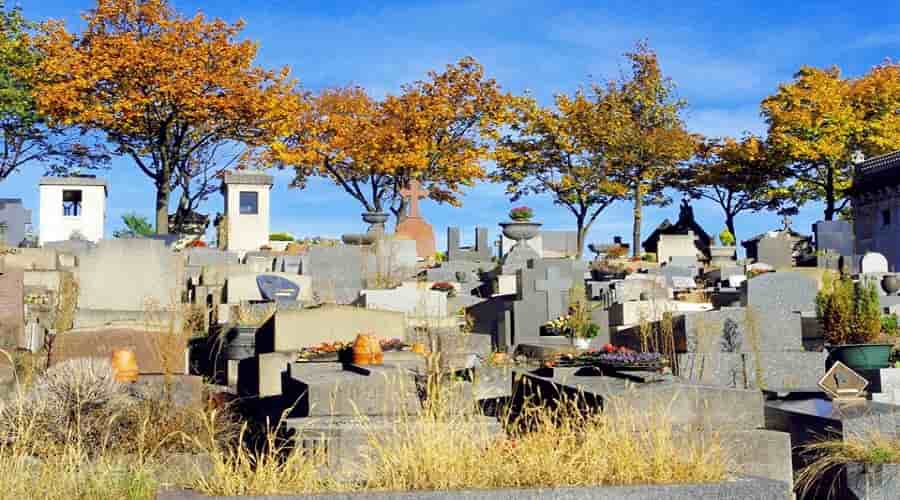
There are tourists, which are especially interested in Graveyard stories and various burial places. If you can classify yourself to such people, then you just need to visit the Pere Lachaise cemetery, located in Paris. This is probably the most famous burial place in the world.
Until the last years of the seventeenth century famous and wealthy Parisians were buried on the church cemeteries. Nonetheless in the early period of the eighteenth century the city authorities decided to change the tradition and, thus, organized the city cemetery.
The new city cemetery was located at the place of Pastor Lachaise ex-land, a personal confessor of monarch Louis XIV. In order to raise the popularity of the new cemetery among residents of the capital of France, the remains of many famous people during their lifetime, among them La Fontaine, Moliere, and Heloise and Abelard, were moved here.
Today Cimetiere du Pere-Lachaise has become a real museum, exhibiting a great number of original samples of gravestone art. Many famous representatives of culture, literature, science, music and cinema found their final resting place here.
Centre Pompidou
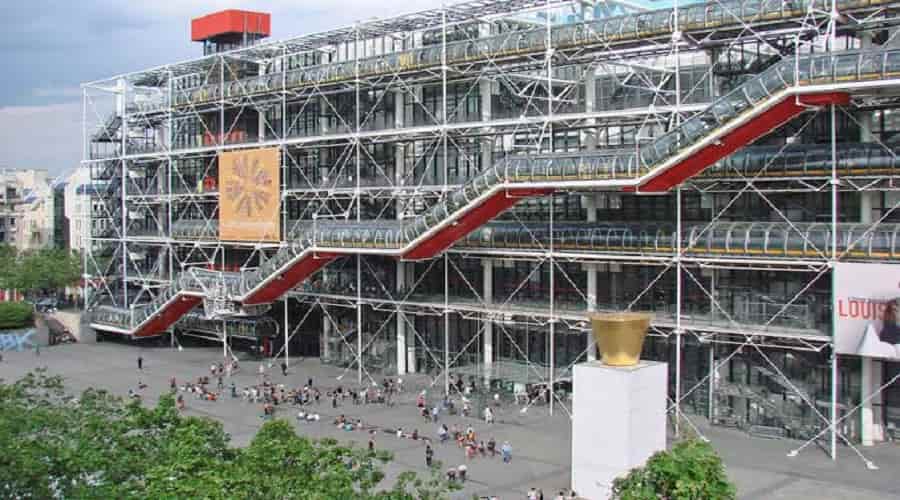
Arts & Cultural Center named Center Georges Pompidou (Centre national d’art et de culture Georges-Pompidou) was created in 1977 by the former French President Pompidou. It is the whole complex of both cultural and exhibition facilities, such as a large library, the Museum of Modern Art, various exhibition and concert rooms, Design Center, Institute of coordination and study of music and acoustics. Among the exhibits of the Museum of Modern Art you can admire the works by Matisse, Picasso, Beuys, Tinguely, Kabakov, and many others.
From the very day of its foundation and up to now Centre Pompidou enjoys a great interest among tourists and devotees of the new art of the twenties century. The Center can only yield the palm to the Louvre and the Eiffel Tower according the visiting rating.
The building of the Center Georges Pompidou was designed by architects Rogers and Piano in a contemporary style high-teck. The main architects` original idea was to put all the technical design constructions outside, making it possible to make the inner area of the premises, which occupies nearly 40 thousand square meters, the most useful.
Palais Garnier

Paris Opera Garnier, also known under the name of Grand Opera, is one of the most important and famous opera and ballet theaters in the world. It is situated in the ninth district of Paris, in the Palais Garnier. For a long time the theater was called the Paris Opera. Everything changed only from the moment when, in 1989 another theater playground opened – Opera Bastille. The building of the Grand Opera was awarded the name of the architect who built it in 1875. The name of the architect was Charles Garnier.
The lobby is one of the most notable buildings in Opera Garnier. You can easily reach the lobby and halls of the theater by using double flight of stairs, paved with colored marble slabs. You can see images of different musical allegories on each of the four parts of the ceiling.
The auditorium is in the noble red and gold colors. It resembles a horseshoe in shape. You can witness the signature, performed in 1964 by the legendary Marc Chagall on the ceiling.
Jardin du Luxembourg

Jardin du Luxembourg is one of the most famous sights of Paris, where Parisians and guests of the city are always happy to spend their free time.
It has everything to ensure a comfortable leisure time for students, senior citizens, sports enthusiasts and families with small children. Here you can see the play performed by the Guignol theater of miniatures, little old carousel and the magnificent fountain, located in front of the palace facade. Many generations of kids let rented or self-made boats swam from here.
Luxembourg Gardens was created in 1611 within the former possessions of the monastery of the Carthusians at the request of the widow of Henry IV Marie de Medici. These places have overgrown with awesome glory long ago. However, it did not stop the garden to acquire a huge popularity among the Parisian aristocracy from the XVII century. Therefore, it became a popular place for walking for Diderot, Rousseau and others.
Chalgrin designed the park landscape. Along the avenues you can meet the statue of famous ladies and queens of France, including Mary Queen of Scots, St. Genevieve, and Marie Clotilde of France.
Musee Rodin

Rodin Museum is an Art Gallery that was open in France in 1919. It houses the largest exhibition of sculptor Auguste Rodin`s works. The Museum is located in the old mansion, built in the early years of the eighteenth century for the barber, who was able to make a huge fortune by trading securities. Later, this mansion became famous due to the fact that once there lived such celebrities as painter Matisse, poet Jean Cocteau and internationally recognized dancer A. Duncan.
From 1908, in this mansion there was a workshop of Auguste Rodin, who bequeathed almost all his work to the state after his death. All the mentioned works, as well as unfinished sketches and drafts, are exhibited in Rodin Museum.
On the sandy areas of the garden you can watch the famous composition The Gates of Hell, The Burghers of Calais, and statue The Thinker. Inside the chapel, located on the territory of the museum, there is a collection of Egyptian, Greek and Roman art, made by Auguste Rodin personally. Yearly exhibitions of contemporary art works are organized here every summer.
Catacombs of Paris

Paris Catacombs is a network of underground tunnels and caverns, which is over 187 km, organized in the XVIII century. Catacombs were formed in order to relieve overcrowded urban cemeteries. It has always been a source of diseases of citizens living near them.
Municipal ossuaries (the official name of catacombs) were housed in the former quarries of Paris, outside the city. Today they occupy the certain part of the left bank of the Seine and the underground space under the Place Denfert Rochereau.
The remains of the city cemetery Saint Nicolas de Shang were first moved to the catacombs. Then the victims of the Place de Greve and street Meslin riots, as well as in Briana family house in August 1788 were buried here. All walls in ossuaries are entirely covered with inscriptions and drawings.
Many literary works, including Les Miserables by Victor Hugo, and many others depict Paris systems of underground tunnels. Perhaps that is why many tourists have high interest to the underground system of the city.
Champs-Elysees

Champs-Elysees (or, as they are called, Champs Elysees) is the name of one of the main thoroughfares of Paris, which is located in the eighth district. Champs-Élysées leads from the Arc de Triomphe (Arc de triomphe de l’Étoile) to Place de la Concorde (Place de la Concorde). Its length is 1,915 km. Several thousands of people, including both the residents of the French capital, and the guests of the city gather every fay on this one of the main attractions of Paris.
The first written mention of the region is found in the historical reports of the XVI century. According to these documents there was swampy terrain on the place of today’s Champs-Elysees. Both Parisian nobles and members of royal families loved hunting ducks and other fowl at this place.
Today, there are no swamps here. Champs-Élysées has already turned into a picturesque place, where people gather on holidays and memorable days in the history of France. There are annual military parades on the Champs Elysees on Bastille Day (July, 14) and the anniversary of the end of the First World War (November, 11).
Arc de Triomphe

In winter 1805, after the victory in the Battle of Austerlitz, by order of the governor of Napoleon Bonaparte on the top of the hill known as Chaillot, the construction of the Arc de Triomphe started. It is a monument symbolizing the power and strength of the French army. Arch construction was entrusted to architect Jean Chalgrin, who had managed to complete the work only by 1836.
The Arc de Triomphe has considerable dimensions: its width is 45 m and height is almost 50 m. Above the arch there are bas-reliefs depicting the winged girl who trumpeted the victory of a fanfare. The authorship of the bas-reliefs belongs to the sculptor Jean Jacques Dieu. In turn, arches are decorated with images of the most memorable battles, such as Francois Rude’s sculpture of La Marseillaise, Resistance and Peace by Antoine Étex, and Triumph 1810 by Cocteau.
Engravings depicting the names of 558 commanders and 128 names of battles in the history of France, in which the imperial and republican army won, are adorned on the walls of the arch.
A hundred arches set of granite pedestals, united by a chain are around the Arch. Please note that this number is not accidental. It is a symbol of The Hundred Days of Napoleon I in 1815.
About Paris
Paris is an important economic, political and cultural center around the world. This is where the headquarters of several major French and international financial and socio-political organizations are located.
Where to Go, What to See in Paris?
There are so many attractions in the city that you can come here every year, but still will not have time to visit them all. From what you can see in Paris in the first place, many have called the Eiffel Tower. Once it served as proof of the progress of France (after all, to construct a building height of 317 m can only a very high-tech country), but now its silhouette is known in the world more as a romantic symbol. From the tower viewing platform beautiful view opens.
What to see in Paris alone? Perhaps everything except the Louvre (there will be more interesting with a guide), you can visit by yourself. For example, Notre Dame de Paris is the largest Western European Gothic cathedral, known even to those who have never been in France. Not far from it you can see and visit the Centre Pompidou, which is both a museum and concert hall, and a library.
The next item on the program can be visiting the River Seine, Pont Alexander III, the Champs Elysees and the Arc de Triomphe. Pictures, which depicted the main attractions of Paris, can decorate any photo album, both usual, and the virtual.
In no other city you could get lucky with this more than in the French capital. The famous Louvre, sightseeing tour only a small part of which takes several hours, the Historical Museum, the Museum of inventions, Museum of Man – the total number of such places is over a hundred. Among them there are many exhibitions devoted to great artists and writers of the world – Picasso, Dali, Delacroix, Hugo, Balzac, and Rodin.
What you need to see in Paris if you arrive here with the whole family? Your program must necessarily include a visit to the children (though there will certainly be interesting and adults) in Paris “Disneyland”, consisting of the five thematic areas of amusement and entertainment. There is another place worth visiting with baby the Animal park of Thoiry. It is located around an ancient castle; the park can boast with an interesting zoo and botanical garden.

 Call
Call WhatsApp
WhatsApp Enquiry
Enquiry